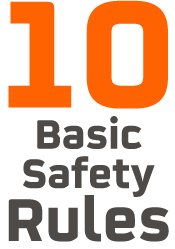
At Repsol, what matters most to us is your Safety.
Each of these rules have been developed for you, to help you perform your job as safely as possible. Become your head of Safety.
This portal is designed to offer you all the necessary material to know and disseminate Repsol’s 10 Basic Safety Rules. Access the world of the 10 Rules by clicking on each content.
10 Rules  to save life
to save life

Safe driving
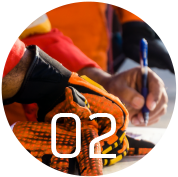
Work permits
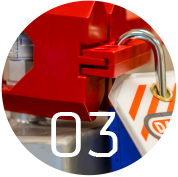
Isolation and lockout
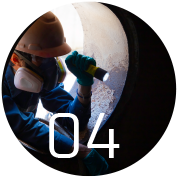
Entry to confined spaces
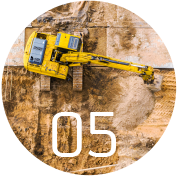
Excavation
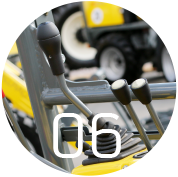
Mobile and energised equipment
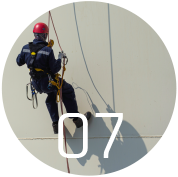
Work at height
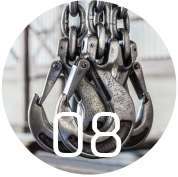
Lifting operations
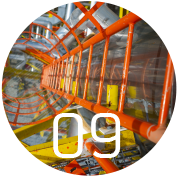
Dropped objects
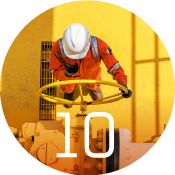
Prevention of leaks
Training

LearningCoffee
Learn the content of the 10 Basic Rules in the time you take to have a coffee. Anytime and on any device.

Multimedia Course
* If you are a Repsol employee, take this training on the corporate learning platform.
Reinforce your knowledge on the 10 Basic Rules and put yourself to the test with this multimedia course.
Download material
Digital repository with corporate materials prepared for download and use.
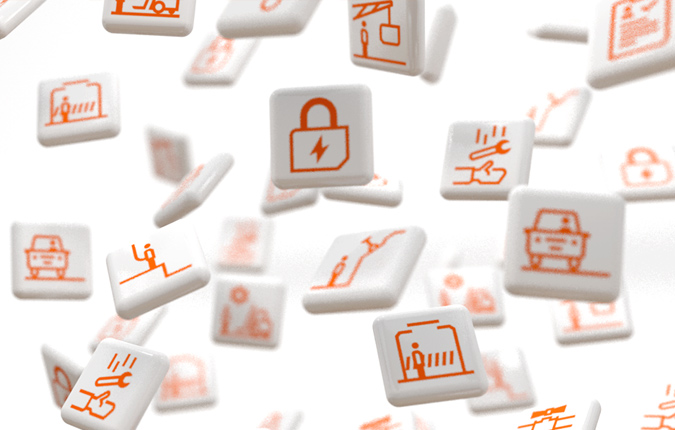
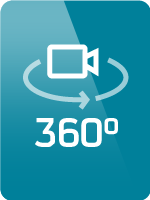
And always remember 
Evaluate
Stop and think about safety before starting work
Insure
Make sure you understand and apply all security measures. When in doubt, consult your supervisor
Warn
If you detect an unsafe situation or condition, stop work without fear of retaliation
Notify
Report any unsafe incidents, actions, or conditions
Perform
Always keep in mind how to act in an emergency
Know the 10 rules
Safe driving
Plan your trip, assess the risks, and avoid distractions at all times.
Before the journey:
- Perform an inspection of the vehicle and plan your trip considering rest periods, weather and road conditions.
- Do not drive if you have been drinking alcohol or if you have taken any substance, including medication, which may affect your ability to drive.
- Always wear your seatbelt and ensure that everyone travelling with you also does so.
During the trip:
- Respect the traffic laws as well as any specific rules of private premises.
- Do not manipulate mobile phones, radios, GPS, or any other devices while driving.
Work permits
Make sure you have a work permit whenever it is required.
Before working:
- Do not start working on tasks without an authorized permit when a permit is required. Understand the risks involved and the preventive measures before commencing work.
- Ensure all safety measures listed in the permit have been implemented.
- Notify involved and affected people of the scope and timing of the work.
While working:
- Always follow the instructions on the work permit and remember that you can only perform the work described in the permit.
- If the work conditions change or you have any concerns, stop work safely and consult your supervisor.
- Once the work is complete, verify that the site is safe, clean and tidy and ask for the work permit to be closed.
Isolation and lockout
Use isolation and lockout systems to stay safe from hazards such as electricity, pressure, temperature or chemical products.
Before working:
- Check that mechanical and electrical isolation has been installed in the identified locations and make sure that it is mechanically secured and that there are signs indicating its presence.
- Confirm that there is no accumulated “energy” (electricity, gas, liquids, etc.) in the system and verify that the isolation is effective.
- Apply lock-out systems (padlocks, seals, etc.) to prevent removal of the isolations before the work is finished.
- Notify affected personnel about the isolation and lock-out operations
While working:
- Check the isolation after every interruption of work.
Entry to confined spaces
Make sure you understand and apply all safety measures specified in the entry permit before entering a confined space.
Before entering:
- Verify that there are signs indicating the confined space and that the space is protected from unauthorized entry.
- Do not enter or allow access to the confined space without a duly completed, authorized and communicated entry permit.
- Ensure the interior atmosphere is tested and verified before and during work, if required by the entry permit.
- Make sure you have the necessary personal protective equipment.
- Ensure that you know and understand the steps to take in the event of an emergency and ensure that the required resources are readily available.
- Verify that there is someone outside the confined space ready to help you if necessary and that you can communicate with each other without any difficulty.
While working:
- Use the appropriate respiratory protective equipment and monitor the atmosphere continuously if the entry permit so requires.
- If the atmosphere conditions change during the work, immediately stop work in a safe manner, leave the area, and consult your supervisor.
Excavation
Adopt appropriate measures to prevent cables, pipes, unstable ground and other risk factors from causing incidents during excavation.
Before working:
- Do not begin excavation without prior risk assessment and authorization.
- Ensure that all underground installations are identified, located, protected and that there are signs indicating their location.
- Signpost and protect the excavation in order to prevent people and objects from falling in.
- Confirm ground stability is guaranteed before work and after adverse weather conditions.
- Always brace the excavation unless the work permit defines it as unnecessary.
- If the excavation is over 1.2 m deep, it could be a confined space. Request information from your supervisor to determine if a confined space entry permit is required.
- Make sure there is an evacuation route for every person involved.
While working:
- Place the excavated material at a safe distance from the edge of the excavation as determined in a risk analysis.
Mobile and energised equipment
Standing in the path of mobile (e.g. cranes, forklifts and other vehicles) and energised equipment (e.g. rotating equipment, electrical or pressurized machinery) may cause you to be struck, trapped or splashed.
Before working:
- Ensure the equipment has all necessary protection systems and that they are working properly.
- Confirm that entry into the operational area of the mobile or energised equipment is restricted during its operation.
- Ensure that everyone involved in the operation is familiar with and understands the communication systems (signals, warning lights, etc.) to be utilized.
While working:
- Stay in a safe area where the equipment will not strike or trap you and you will not be splashed or hit by materials or fluids.
- Follow the instructions of the person in charge of the equipment.
- Ensure that the area is well lit and wear high visibility clothes to ensure you can be seen.
- Do not disable the protection systems on the equipment.
Work at height
Protect yourself from falling when working at height.
Before working:
- Do not begin work at height without an authorized procedure, permit or certificate that includes a risk assessment.
- When working at height, if there is no collective protection (rails, etc.) or when working on mobile equipment, a harness must be used.
- Ensure that the equipment for working at height is in good condition and used correctly.
While working:
- Only use authorized scaffolding, platforms and ladders.
- In order to raise and lower objects, always use a bag or tool tether that allows you to keep your hands free.
- Your harness must always be hooked to an anchor point that can withstand your weight if you fall. Whenever possible, it should be connected above your head.
Lifting operations
Use a lifting plan and never stand below a suspended load.
Before the job:
- Use an authorized lifting plan.
- Inspect slings, cables and any other lifting and anchoring equipment. Reject any equipment that is not in good condition.
- Verify that the load does not exceed the maximum permitted capacity for the lifting equipment and that it does not contain anything that could come loose and fall during manoeuvres.
- Protect and place signs for the areas that will be affected and never enter or allow others to enter these areas.
- Ensure that everyone involved in the operation is familiar with and understands the communication systems.
While working:
- Minimise the number of people at the job site and do not stand below the suspended load or allow others to do so.
- Use cables/ropes to guide the load and never touch it with your hands while it is suspended.
Dropped objects
Prevent objects from falling to lower levels.
Before working:
- Secure tools and portable equipment to prevent them from falling.
- Inspect and protect potential holes (including mezzanine/grating floors).
- Erect barriers and place signage around drop zones below worksites.
While working:
- Keep things neat and tidy and ensure that only the necessary tools and equipment are at the job site.
- Avoid standing under areas where work is going on and respect all safety barriers.
Prevention of leaks
Stay alert to possible leaks of hazardous substances to prevent potentially serious incidents.
- Report leaks at facilities or any situations that could cause a leak.
- Operate equipment within the specified safety limits.
- Verify that leak detection systems are working properly.
- Obtain authorization before you disable any safety equipment.
Download Guide 10 BSR in PDF format for reading on digital devices and printing.

